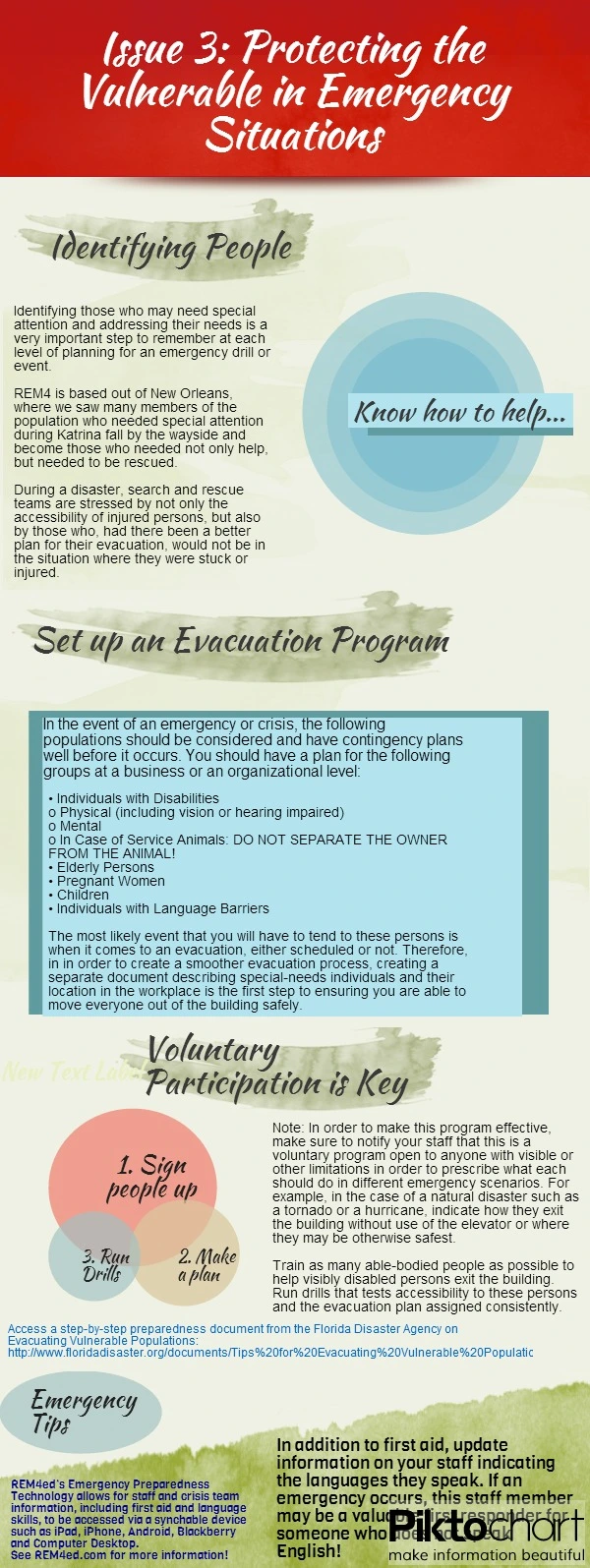
A valuable PikToChart Emergency Preparedness Release

A valuable PikToChart Emergency Preparedness Release
During the last blog entry, we introduced the four phases of emergency preparedness. Today, we want to discuss hazard mitigation and preparedness while highlighting K-12 school risks. When we look at the emergencies that have swept schools over the years, what becomes the most difficult to assess is the ripple effect that it has on the overall community. If a school is damaged by a natural disaster or violated by an attacker, it compromises the quality of that community’s infrastructure and demands reevaluation of protocol and policies. Even more importantly, when the safety of our children has been compromised, the community must learn to better identify and prepare to recover from emotionally, physically and administrative challenges for the long-term.
Here at REM4, we are constantly reminded that there will always be hazards that are difficult to plan for. We wish to emphasize the importance of proactive hazard and risk assessments and programming so that you can create hazard mitigation and preparedness tools that will aid you in time of need, and ease recovery.
What is a Risk Assessment?
The purpose of risk assessments is to identify demonstrated vulnerabilities/hazards that will turn into liabilities for damage and policy, should the hazards not be addressed. The risk assessment is one of the first implemented documents in your Crisis Binder.
There are several types of challenges that risk assessments seek to target:
List courtesy of: http://www.schoolsecurity.org/consultants/security-assessments.html
Investment in a high-quality risk assessment is the first step in instilling a solid foundation for hazard mitigation and preparedness programming. For example, studying the crime rates and statistics in your community aid in evaluating your security needs, researching the natural hazards that have historically hit the region allow you to create sound evacuation and shelter-in-place drills/procedures, and knowing the special skills of your own staff will ensure that you have valuable assistance in any given crisis. Lists provided by professionals in Emergency Preparedness and Technology are the first step in risk assessment.
Emergency 101 Tips: Take your time and make risk assessment a priority. Question multiple resources including experts of different capacities on staff (i.e. facilities, maintenance, security, principal) and archived documents.
Already have a risk assessment, but there may be holes or it hasn’t been updated in a while? Don’t fret. Set up a recurring audit for your risk assessment is one way of ensuring that new information is added into your tool. Updating risk assessments is necessary to ensure quality data and programming is in place!
Interested in an easier way to not only create, but implement a risk assessment? REM4ed is a leading expert in emergency management and preparedness, including a high-quality risk assessment tool and training for proper planning. Contact one of our experts for a consultation today: info@rem4ed.com